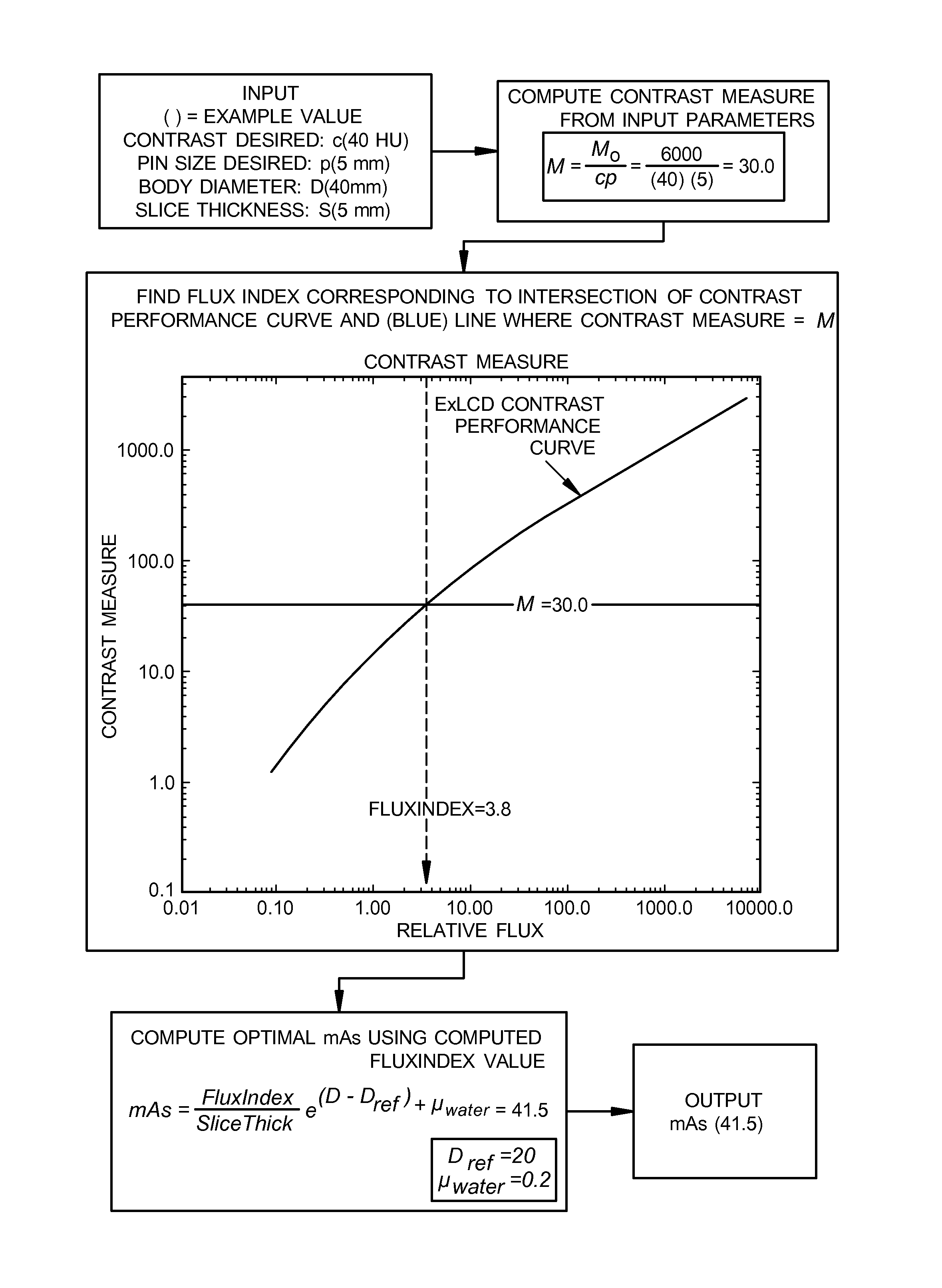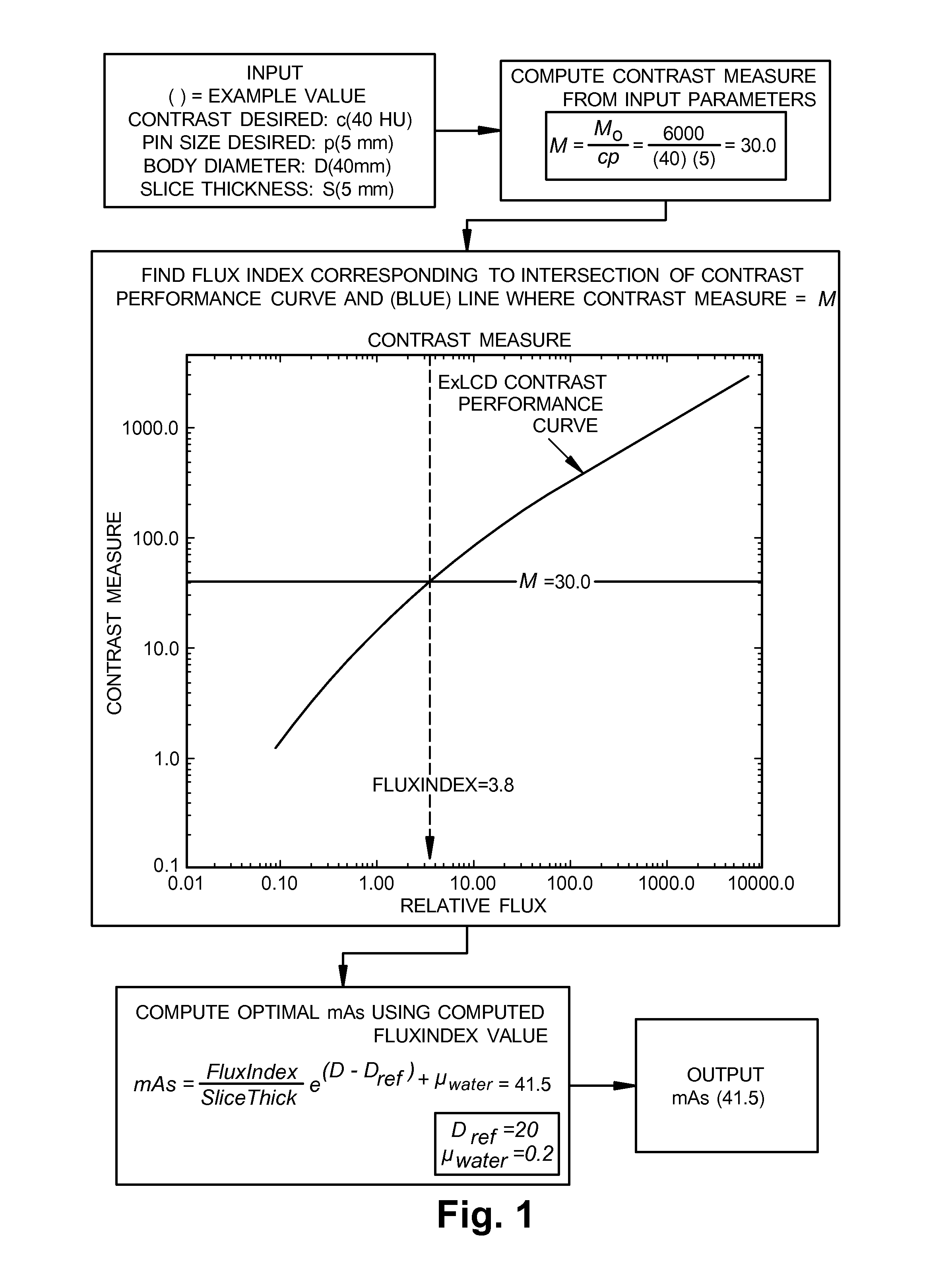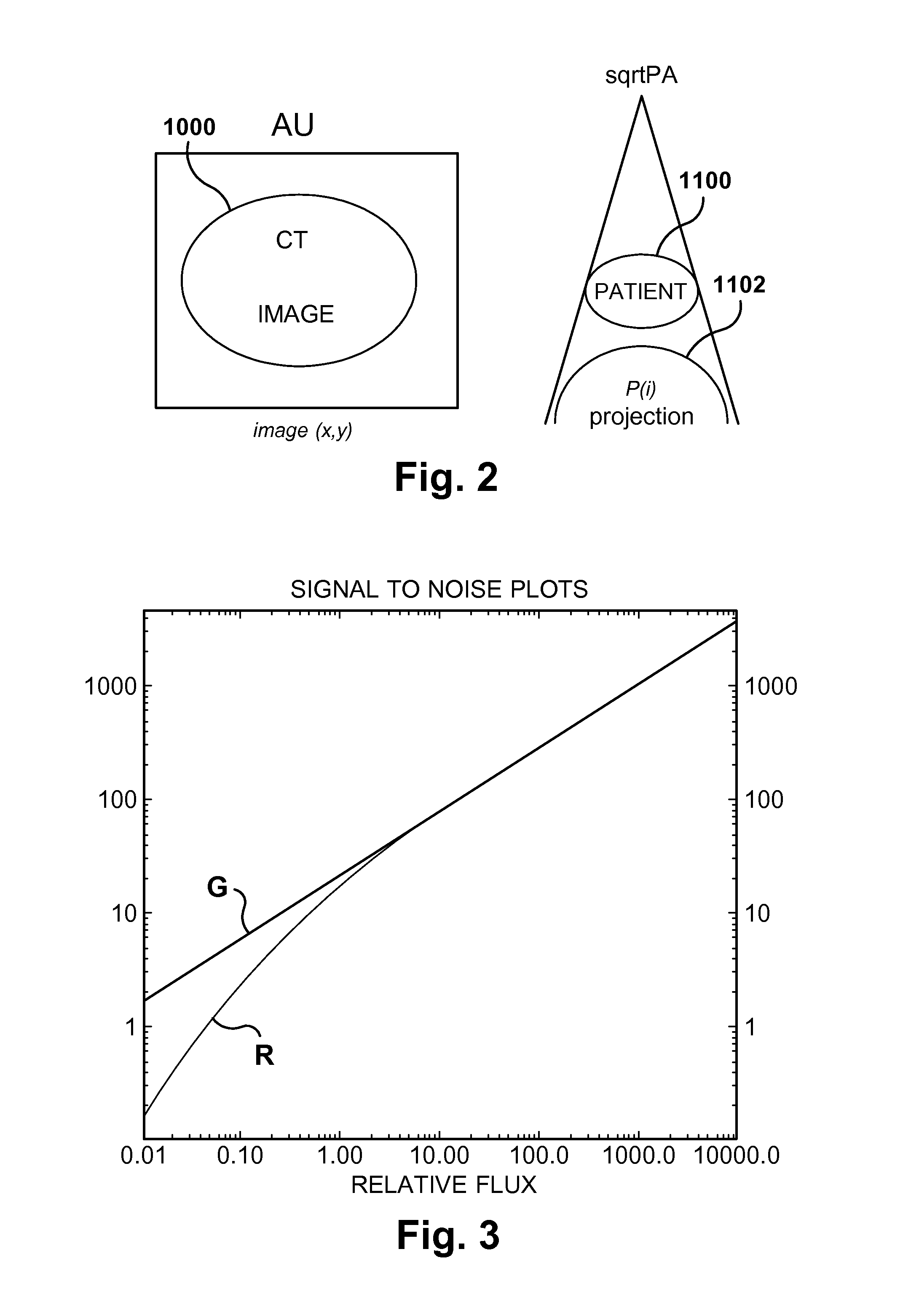Extended low contrast detectability for radiographic imaging systems
a radiographic imaging and low contrast technology, applied in the field of radiographic imaging, can solve the problems of increased radiation dosage, increased image noise, and insufficient current lcd specification, and achieve the effect of low dose scans and good image quality
- Summary
- Abstract
- Description
- Claims
- Application Information
AI Technical Summary
Benefits of technology
Problems solved by technology
Method used
Image
Examples
Embodiment Construction
[0101]FIG. 1 shows a representative data flow example for an optimal protocol selection process in accordance with the disclosure and related inventions. Assume that an ExLCD Performance Function is available for a scanner or particular radiographic imaging system. A desired contrast level is selected based on the clinical image quality requirements. In this example, the desired Contrast Index is 30.0 corresponding to a 5 mm pin at a contrast level of 40 Hounsfeld Units (HU). The Optimal Protocol Selection then determines the location on the Contrast Performance Curve corresponding to the desired Contrast Index. Since the ExLCD Performance Function is always monotonic, there will be a unique Flux Index value corresponding to the intersection of the Contrast Index value and the ExLCD Performance Function as illustrated in the graph on FIG. 1. For this example, the Flux Index value determined is 3.8. This unique Flux Index value can then be used to determine the optimal protocol.
[0102...
PUM
 Login to View More
Login to View More Abstract
Description
Claims
Application Information
 Login to View More
Login to View More - R&D
- Intellectual Property
- Life Sciences
- Materials
- Tech Scout
- Unparalleled Data Quality
- Higher Quality Content
- 60% Fewer Hallucinations
Browse by: Latest US Patents, China's latest patents, Technical Efficacy Thesaurus, Application Domain, Technology Topic, Popular Technical Reports.
© 2025 PatSnap. All rights reserved.Legal|Privacy policy|Modern Slavery Act Transparency Statement|Sitemap|About US| Contact US: help@patsnap.com



